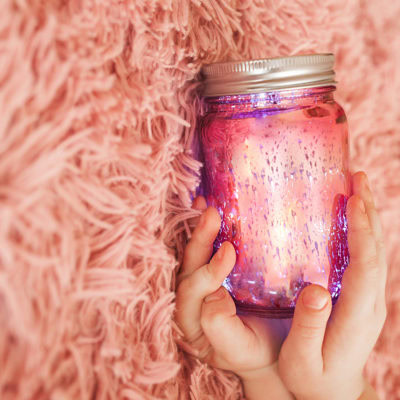By Heather Fernandez, MSW, Bilingual Outpatient Therapist
The success of our young children depends on the care they receive at home, at school, and in the community. Mental health is a vital component of that overall success and well-being: 1 in 6 U.S. children ages 2-8 years old has a diagnosed mental, behavioral, or developmental disorder, according to the Centers for Disease Control & Prevention (CDC)—and that rate increases with age.
An especially stressful, traumatic, or confusing time—such as the COVID-19 pandemic—can create strong emotions in children, as well as adults. “Children and teens react, in part, on what they see from the adults around them,” writes the CDC. Parents can create calm, safe spaces for children to express their feelings by incorporating mindfulness activities into daily life. As part of our school-based partnerships, we recently recommended the following activities to parents at St. Mary’s School in Riverside, IL, during their e-learning time. These activities can help you and your child gain coping and communication skills at home.
Activity #1: Play “Name That Feeling.”
Watch the video below and see how many feelings you can each show:
Activity #2: Create a calm-down jar, also sometimes called a glitter jar or sensory bottle.

Simply find an empty jar or plastic bottle with a lid (a great way to recycle). Allow your child to decorate the outside of the bottle with paint, stickers, or other materials. Fill the bottle ¾ of the way with water. Add glue or glycerin, food coloring, and glitter. Seal the lid with a heavy-duty glue such as Gorilla Glue. Have your child shake the jar and remain present, breathing and quietly watching it as it settles (the glitter in the jar represents the mind settling).
Activity #3: Feelings Charades, Part I
Watch a song or clip about feelings (ideas below) and then try to act out the feelings:
Activity #4: Feelings Charades, Part II
Watch a song or clip about feelings (ideas below) and then try to act out the feelings:
Activity #5: Practice deep breathing.
Practicing this relaxation technique regularly can help provide both immediate and long-term relief from stress and anxiety:
Find additional activities in our Mind-Body Wellness Toolkit.
What to Do If Your Child’s Behavior Changes
Some increase in stress and emotional response is to be expected during an especially unique and stressful period in society. If your child’s emotional response or mental health issues inhibit their ability to complete daily tasks or feel their best, it may be time to seek help. Watch for common changes in children’s and teens’ behavior that may imply a need for mental health support:
- Excessive crying, sadness, irritability, or worry
- Poor school performance or avoidance of school
- Difficulty concentrating; unexplained headaches, stomachaches, or body pain
- Substance use
- Poor eating or sleeping
- Return to behaviors they’ve outgrown such as bedwetting
At Pillars Community Health, we seek to promote and enhance your child’s overall well-being through relationship-building and support during times of stress or difficulty. If you or someone you love could benefit from our Behavioral Health Services, call 708-PILLARS (708-745-5727) or click here to learn more.